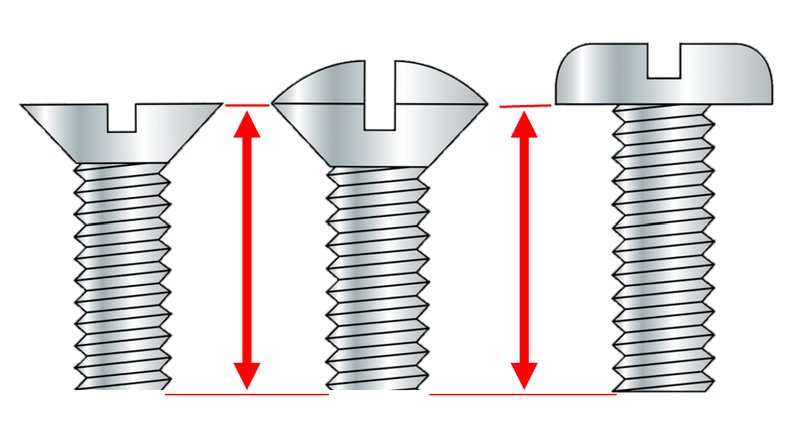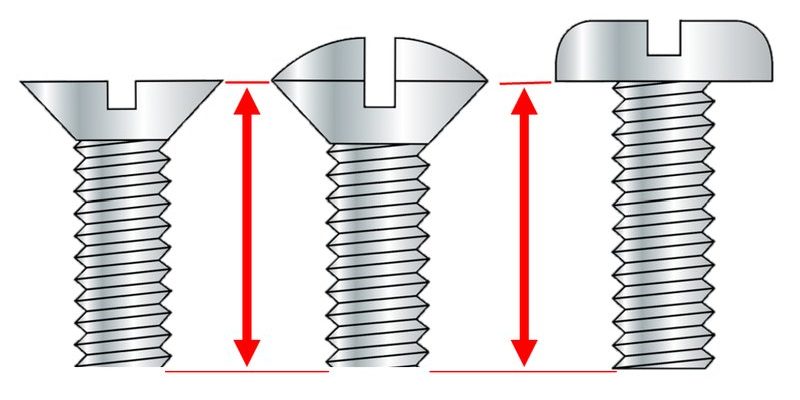
Imagine for a moment trying to hang a beautiful shelf on your wall. You grab a screw, but it’s either too short to reach the sturdy part of the wall or too long that it might poke through. In this scenario, having the right screw length is not just convenient; it’s essential. Choosing the correct length ensures your hardware performs well and stays safe and secure. Let’s dive into why screw length matters and how to choose the right one for your needs.
Why Screw Length Matters
When we talk about screw length, we’re referring to the distance from the tip of the screw to the bottom of the head. This may sound straightforward, but there’s more to it than meets the eye. Each screw length serves a specific purpose, depending on the materials you’re working with. If the screw is too short, it won’t hold anything together. If it’s too long, it could cause damage or even injury.
Here’s the thing: using the correct screw length ensures that your project is both safe and effective. A screw that’s too short might let shelves sag under weight, while one that’s too long could poke through to the other side of your workpiece or even mess up internal wiring. Knowing how to pick the right size can save you a lot of headache down the line.
Common Applications for Different Screw Lengths
Every project is different, and so are the screws you’ll need. For most household tasks, screws typically range from 1 inch to 3 inches in length. Here are some common applications and their ideal screw lengths:
- Furniture Assembly: For most flat-pack furniture, screws around 1 to 1.5 inches work well to hold parts together without poking through.
- Wall Shelves: A length of 1.5 to 2 inches is usually sufficient to ensure the screw reaches into the wall stud for maximum support.
- Woodworking Projects: Depending on the thickness of the wood you’re joining, you might need screws that range from 1.25 to 3 inches.
- Drywall Installation: For securing drywall to wooden frames, screws of 1-1/4 to 1-5/8 inches are typically used.
By knowing how and where to use different screw lengths, you can choose the perfect screws for each situation and avoid any mishaps.
How to Measure Screw Length
Measuring screw length may seem simple, but getting it right is crucial. The most common way to measure the screw is from the tip to the underside of the head. This is crucial because the length you see in stores usually does not include the head.
Here’s a quick method for determining the right length:
1. Check the Material Thickness: Measure the thickness of the materials you are fastening together. For a secure hold, you’ll want a screw that penetrates at least half the depth of the material.
2. Add Extra Length for Safety: If you are fastening to wood, a good rule of thumb is to choose a screw that is 1.5 times the thickness of the material. For example, if you’re fastening a 1-inch board, choose a screw that is at least 1.5 inches long.
3. Consider the Application: If you’re using it in a wall, always account for the thickness of the drywall. This helps ensure the screw reaches solid material behind it.
Measuring correctly can save you from unexpected challenges later.
Common Mistakes to Avoid
Even seasoned DIYers can make mistakes when it comes to choosing screw lengths. Here are some pitfalls to watch out for:
- Ignoring Material Thickness: Always remember that the thickness of the materials you’re joining matters. It’s easy to grab a screw without measuring, but this can lead to weak joints.
- Using the Wrong Type of Screw: Not all screws are created equal. Wood screws are different from metal screws, and using the wrong one can lead to stripped holes.
- Not Testing Before Final Assembly: If you’re unsure, do a quick test. Try a screw in a hidden area to ensure it’s the right length.
Avoiding these common mistakes can make your project smoother and save you time and resources.
Choosing the Right Type of Screw
Not only does the length matter, but the type of screw does too. There are several common types:
– Wood Screws: Designed specifically for joining wood, they usually have a sharp tip and coarse threads to grip wood fibers.
– Machine Screws: Great for metal applications, these screws often require nuts and are typically more precise in size.
– Sheet Metal Screws: These have threads designed to cut into metal for a secure fit.
– Self-tapping Screws: These can create their own hole, making them versatile for various materials.
Understanding the different types ensures that you’ll not only have the right length, but also the right kind of screw to get the job done effectively.
Choosing the correct screw length is more important than you might think. It’s one of those small details that can have a big impact on the success of your home improvement projects. Whether you’re hanging a simple picture frame or tackling more complex builds, investing time in understanding screw lengths can save you trouble in the long run.
So next time you’re in the hardware aisle, remember that not all screws are created equal. Your choice of length can mean the difference between a sturdy mount and a disaster waiting to happen. Happy DIYing!
